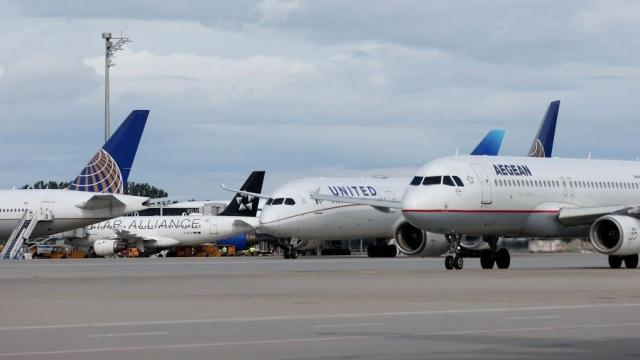If you’re a frequent flyer who has experienced increasingly shaky flights, it’s not just your imagination. Turbulence has increased in the last few decades.
A study released this month in the journal Geophysical Research Letters found that not only has turbulence increased, reported instances of severe turbulence have gone up more than 50% in about 40 years. And the culprit is warmer air due to climate change.
Meteorologists at the University of Reading in England analysed air temperature data alongside what they call “clear air turbulence” in the study, which is turbulence that occurs with no visual cue. Unlike turbulence that occurs due to a nearby storm or heavy cloud coverage, this form of turbulence isn’t easy to detect ahead of time. If flight crews can’t see a sign of potential turbulence, they can’t avoid it. Study authors found that over the North Atlantic, which is one of the busiest flight routes in the world, reported instances of severe turbulence increased from 17.7 hours in 1979 to 27.4 hours by 2020. That’s a 55% increase in four decades.
During that same time period, moderate turbulence rose from 70.0 to 96.1 hours, which is close to a 37% increase. Light turbulence increased from 466.5 to 546.8 hours, which is a 17% increase. North America and the North Atlantic have seen the highest increases in turbulence, but researchers noted that it has increased in other busy flight corridors including over Europe and the South Atlantic.
The timeline of these turbulence increases has coincided with climate change’s effects on the planet. The world’s temperature has increased by an average of 0.14 degrees Fahrenheit (.08 degrees Celsius) per decade since the late 1800s, according to data from the National Oceanic and Atmospheric Administration (NOAA). The rate of warming has also increased significantly since the early 1980s to 0.32 degrees Fahrenheit ( 0.18 degrees Celsius). And that warmer air increases wind shear in the global jet streams, the study explained. Wind shear is used to describe how the wind changes direction and/or speed, according to NOAA. This means that the wind changes direction or speed, and this often occurs at high altitudes where aeroplanes fly.
Paul Williams, a professor of atmospheric science at the University of Reading and a study co-author, was also part of an earlier report in 2019 that looked at how wind shear has increased about 15% since 1979. In a later study, Williams and colleagues used climate model simulations to project that clear air turbulence would continue to increase at different rates depending on greenhouse gas emissions, NPR reported.
Mark C. Prosser, a co-author of the study explained that turbulence isn’t just a slight inconvenience, it can be dangerous for passengers and airline employees. Turbulence turns everyday objects into projectiles, and people who may be standing when there is turbulence could be thrown around. Videos uploaded online have shown the aftermath of strewn food and personal items. Flights have had to land earlier than intended, and people have been hospitalized after experiencing severe turbulence during travel.
A Lufthansa flight that experienced “significant turbulence” was diverted to Virginia and seven people were taken to hospitals.
Social media footage showed food trays, screens, pillows and other items scattered inside the plane: https://t.co/D2vkkFmhNJ pic.twitter.com/wUOgdiB4XH
— The Associated Press (@AP) March 2, 2023
“Airlines will need to start thinking about how they will manage the increased turbulence, as it costs the industry $US150–500 [million] annually in the USA alone,” Prosser said via a press release. “Every additional minute spent travelling through turbulence increases wear-and-tear on the aircraft, as well as the risk of injuries to passengers and flight attendants.”
